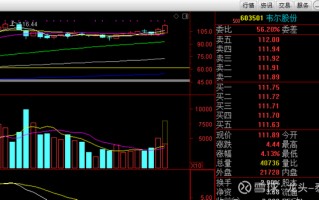Title: Comparative Analysis of Transaction Processing Speed (TPS) Among Major Public Blockchains
Blockchain technology has revolutionized various industries by offering decentralized and transparent systems for transactions and data management. Transaction Processing Speed (TPS) is a crucial metric for evaluating the efficiency and scalability of public blockchains. In this analysis, we'll compare the TPS of several major public blockchains and explore factors influencing their performance.
Understanding Transaction Processing Speed (TPS)
TPS refers to the number of transactions a blockchain network can process per second. It is influenced by various factors, including consensus mechanisms, block size, network latency, and scalability solutions.
Comparative Analysis
1. Bitcoin (BTC)
TPS: Bitcoin's TPS is around 7 transactions per second.
Consensus Mechanism: Bitcoin uses Proof of Work (PoW), which limits its scalability.
Scalability Challenges: The small block size (1MB) and high network congestion lead to slower transaction processing.
2. Ethereum (ETH)
TPS: Ethereum's TPS varies but generally ranges from 15 to 30 transactions per second.
Consensus Mechanism: Ethereum currently uses PoW but is transitioning to Proof of Stake (PoS) with Ethereum 2.0, which promises higher scalability.
Scalability Solutions: Layer 2 solutions like Optimistic Rollups and Plasma aim to improve Ethereum's scalability.
3. Binance Smart Chain (BSC)
TPS: Binance Smart Chain boasts higher TPS, with estimates ranging from 100 to 300 transactions per second.
Consensus Mechanism: BSC uses a variant of PoS, which enhances its scalability compared to Bitcoin.
Centralization Concerns: BSC's higher TPS comes at the cost of centralization due to a smaller number of validators.
4. Solana (SOL)

TPS: Solana achieves extremely high TPS, reportedly over 65,000 transactions per second.
Consensus Mechanism: Solana uses a unique Proof of History (PoH) combined with Proof of Stake (PoS), enabling its high throughput.
Scalability Architecture: Solana's architecture is designed for scalability, with parallel processing and a network of nodes facilitating rapid transaction processing.
5. Polkadot (DOT)
TPS: Polkadot aims for TPS in the range of thousands to tens of thousands.
Consensus Mechanism: Polkadot employs a variation of PoS called Nominated Proof of Stake (NPoS), which enhances scalability and security.
Interoperability: Polkadot's parachain architecture allows for interoperability between different blockchains, potentially increasing overall network throughput.
Conclusion and Recommendations
Transaction Processing Speed is a critical factor in evaluating the efficiency and scalability of public blockchains.
While traditional blockchains like Bitcoin and Ethereum face scalability challenges, newer blockchains like Binance Smart Chain, Solana, and Polkadot offer higher TPS through innovative consensus mechanisms and scalability solutions.
When choosing a blockchain for a specific use case, consider not only TPS but also factors like decentralization, security, and interoperability.
It's essential to monitor the development and upgrades of blockchain protocols, as improvements in scalability solutions can significantly impact TPS over time.
In conclusion, the landscape of public blockchains is dynamic, with ongoing efforts to improve scalability and transaction processing speed. Understanding these factors is crucial for businesses and developers seeking to leverage blockchain technology effectively.
标签: 区块链与人工智能ppt 区块链和nft的区别 区块链与vr 区块链类比 区块链公链对接






